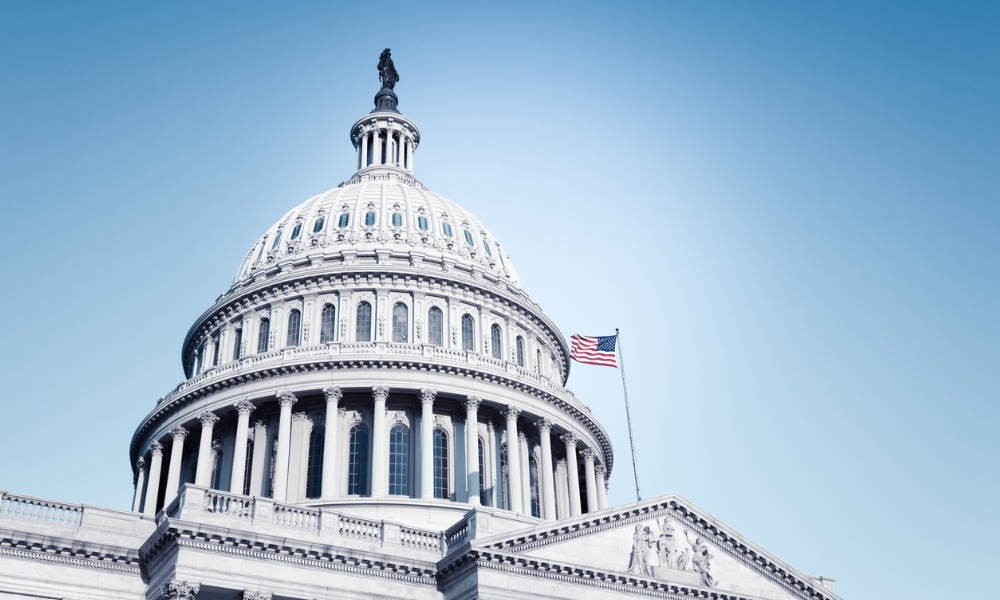Chief economist looks at the divergence between the two countries' interest-rate policies and assesses what it means

While the Bank of Canada now appears to be moving in lockstep with markets regarding the first interest-rate hike, the Federal Reserve remains set on its guideline of 2024 despite many analysts now predicting the end of 2022 or beginning of 2023. This positive CA-U.S. differential is a reversal of the pre-crisis situation and should provide ample support for a strong loonie, according to Mackenzie Investment’s chief economist.
Portfolio manager Todd Mattina believes Canadian investors should keep a watchful eye on the Fed and the uncertainty around its policy, especially after the BoC took a clear hawkish turn in April, pulling forward its first interest rate hike from 2023 to 2022 in reaction to a rapidly improving macro outlook.
It announced it would be tapering its quantitative easing (QE) program, which was widely anticipated as the central bank approaches a technical ceiling on its holdings of sovereign bonds, currently owning around 40% of all outstanding Government of Canada securities.
The more surprising announcement was the interest-rate policy move. Despite large parts of the Canadian economy still being closed, Governor Tiff Macklem has been forward-looking, reacting to its bullish outlook. Mattina said: “It is putting faith in its forecasts, which indicate torrid growth and slightly above-target inflation in the next few quarters. Markets and the central bank are now in lockstep in Canada, both expecting a first hike in the overnight rate in 2022.”
However, the clarity of thinking is not echoed south of the border where there is greater uncertainty around the timing of future hikes. Such a contrast suggests that Canada-US interest rate differentials could now be heavily driven by U.S. policy decisions.
Mattina explained that whether Fed guidance will converge to market expectations or vice versa is a tricky call given the different forces at play and that the BoC could end up having a full-year head start to its rate normalization cycle once the Fed begins hiking.
Later hikes remain the expected path, however. With the Fed’s switch to targeting average inflation, it’s more comfortable letting inflation overshoot its 2% target to compensate for sluggish past performance. The Fed also has a renewed focus on broad labour market measures like labour force participation and minority employment, while it hasn’t even hinted at tapering its QE program yet.
So what does this all mean for Canadian investors? Mattina explained: “An earlier Canadian hiking cycle means a persistently higher real interest rate in Canada versus the U.S., especially given slightly higher inflation expectations for the U.S.
“This would be in stark contrast to the pre-crisis period from 2015 to 2019, when the CA-U.S. differential was negative with Canadian real interest rates well below those in the U.S. The five-year CA-U.S. real yield differential has gone from about -0.5 p.p. in early 2019 to +0.8 p.p. today.
“This higher relative yield has contributed to the recent strength of the Canadian dollar. Any shift of market expectations for the Fed’s first interest rate hike towards the Fed’s guidance of 2024 would prop up this positive real rate differential, further supporting the loonie’s strength.”
He added: “The BoC’s current decision to tighten policy earlier than other major central banks may cool the Canadian economy’s reopening momentum, resulting in the Fed eventually catching up in its hiking cycle, especially if the BoC’s bullish growth forecast for 2021 doesn’t materialize as expected. But until then, the BoC’s stance is supportive for the Canadian dollar, with currency risk coming from uncertainty around Fed policy. And to monitor that risk, Canadian investors should turn their attention from Ottawa to Washington.”



